Marquesas Islands

CRUISE IN THE MARQUESAS ISLANDS
Mythical and mystical. A land that has beckoned explorers and inspired writers, painters and artists. A rugged and breath-taking landscape of peaks, valleys, plateaus, and cliffs. A nation of proud and formidable warriors long ago, distinct from Tahitians, with their own language and culture. A people where a simple smile will win them over. The Marquesas Islands is a world unto itself.
Located 1,500 km northeast of Tahiti, the Marquesas archipel ago consists of 12 islands, only 6 of which are inhabited. The Marquesas Islands emerge from the Pacific Ocean, high and lush. Nature is raw and its charm powerful. It is a land of stories and legends, as fascinating as it is unforgettable. Welcome to the Marquesas, the “Land of Men”.
Henua Enana should be the name one retains of the Marquesas. Each island of the archipelago is one of the foundation pillars of a divine house, built for mankind by Oatea and his wife Atanua.
The two large pillars are represented by the island of Ua Pou; the ridge beam by Hiva Oa; the other beams and rafters by Nuku Hiva; Fatu Hiva, representing the roof; and Tahuata the light at dawn; Mohotani, the song of a bird; and all the remains from the construction became the island of Ua Huka. After the era of the gods came the era of men. However, Spanish prowess, having launched its galleons all over the world as early as the 15th century, decided otherwise. Thus the name Marquesas was given by the Spanish explorer Alvaro de Mendana in 1595, while the four southern islands, observed or explored by sailors from the Spanish expedition, were given the names of saints: Santa Magdalena (Fatu Hiva), Santa Dominica (Hiva Oa), Santa Cristina (Tahuata) and San Pedro (the black rock of Mohotani). The Northern ones were given the honour by an American Joseph Ingraham, , in 1791, who renamed them: Ua Huka became Federal; Nuku Hiva, Washington and Ua Pou, Adams Island.
Posterity soon forgot those names which the Marquesans had always ignored. Meanwhile the Frenchman Etienne Marchand took possession of the archipelago in the name of France and its new regime. These now became the islands of the revolution. History takes a passing delight in these titbits, although only the name ‘Marquesas’ remains. From this administrative denomination, poetry took hold and finally we, the islanders, loved the gentleness of its name. But for you, visitors who wish to feel the history and emotional power of the Marquesas, remember this: these islands at the end of the world are called Henua Enana, the Land of Men.
According to Marquesan legend, the creation of the archipelago represents a house built by the god Oatea for his wife Atanua.
Located in the northern South Pacific Ocean, 1,500 km northeast of Tahiti, the Marquesas are one of the most remote archipelagos in the world. The Marquesas are spread over 12 islands (11 high islands and 1 atoll), of which only six are inhabited: Nuku Hiva, Ua Pou, Ua Huka, Tahuata, Hiva Oa and Fatu Hiva. Due to their geographical isolation, discovering the Marquesas Islands is a unique experience during a stay in Polynesia. The best way to get there, and sometimes the only way, is on board the Aranui, the essential link with the outside world for Marquesans. The Aranui will take you to some of the most remote villages in the world, which no other boat serves.Located in the North of the South Pacific Ocean, 1,500 km northeast of Tahiti, the Marquesas are one of the most remote archipelagos in the world. This volcanic archipelago is composed of 12 islands (11 high islands and 1 atoll), of which only six are inhabited: Nuku Hiva, Ua Pou, Ua Huka, Tahuata, Hiva Oa and Fatu Hiva. The largest island of the archipelago is Nuku Hiva and is inhabited by about 3000 people. The smallest uninhabited island is Motu Nui, which is only 0.36 km². The Marquesas Islands were discovered in 1595 by Álvaro de Mendaña y Neyra, a Spanish navigator. In 1842, the Marquesas Islands were annexed by France and are now part of French Polynesia. The Marquesas Islands are known as a natural paradise: here, no lagoon, but blocks of lava rising in the middle of the Pacific, streaked with deep green valleys. The Marquesas offer themselves in their authenticity and impose their difference. The Marquesas Archipelago is also known for its unique handicrafts, including tiki statues, wood or bone jewelry, carved pirogues and colorful weavings.
Due to their geographical isolation, discovering the Marquesas Islands is a special experience during a Polynesian holiday (cruise). The best way to get there, sometimes the only way, is on board the cargo ship Aranui, an essential link with the outside world for the Marquesans. The Aranui will take you to some of the most remote villages in the world on an unforgettable cruise, which no other boat serves.
Cooled by the gentle breezes of the South Pacific, the climate of French Polynesia is ideal. Being tropical but moderate, the days are sunny and pleasant, with an average yearly temperature of 27°C, making of French Polynesia a year-round destination. With a hot, humid season during the austral summer (November to April) and a cool, dry season (May to October), the breadth of the geography of French Polynesia means that each group of islands has a slightly different climate.
Being closer to the Equator, the Marquesas Islands have a warmer and wetter sub-tropical climate than of the Society Islands. In the Marquesas archipelago, the driest months are between August and December and the wettest months are March and April, although it is frequently sunny. The southern islands of the Marquesas are the wettest, while the northern islands are the driest. The best time to do a cruise in the Marquesas Islands is between May and December-January, when there is less rain. However, it should be noted that all year round is a good time to visit the Marquesas Islands with the Aranui, the experience being above all based on the discovery of the Marquesan culture and traditions.
The flora, originating from South-East Asia and South America, and the terrestrial fauna arrived in the Marquesas by the ocean, pushed by the winds or the Pacific swell. The Marquesas are characterised by a rich endemic flora, which its isolation has succeeded in preserving and conserving to 50%. The Ua Huka Arboretum protects rare or endangered species and is home to many varieties of Pacific trees. Due to its remote location, the archipelago’s terrestrial fauna is limited. Imported from Chile in the 19th century, horses, which Gauguin was so fond of depicting, are omnipresent on the island and often the only means of locomotion from valley to valley. On Ua Uka, often called the “horse island”, one can find wild horses as well as hundreds of goats. The bird, very important in traditional Marquesan society, has a few endemic species including the “pihiti”, found on Ua Huka, the “upe” on Nuku Hiva, and the “pahi” on Tahuata. Although increasingly threatened today, particularly by rats, the birds live rather serenely in the Marquesas.
Until recently, the island’s economic activity was mainly focused on agriculture (copra, lemons, grapefruits) and fishing, but it has gained new impetus, benefiting from the income from public works but also from the exploitation of the “noni”, a fruit with multiple virtues, which is increasingly popular internationally. At the same time, there has been a real boom in the craft and tourism sectors, boosted by the international reputation that its famous guests (Paul Gauguin, Hermann Melville, Jacques Brel) have shaped. Due to its geographical remoteness, maritime freight plays a key function in the economy of the archipelago. The Aranui plays an essential role in this respect, ensuring on the one hand the supply of food products, petroleum products and construction materials and on the other hand the export of local products to Tahiti. Cruises on board our mixed cargo ship are a unique opportunity to witness the unloading of cargo and to meet the local population.
In addition to traditional Polynesian dishes, such as Tahitian raw fish, “umu”, cooked for hours in a buried oven, the Marquesas have their own culinary specialities. These include curried goat, “popoi”, a fermented paste made from taro, a tuber grown on the island’s marshy lands. A staple food for Marquesans, the fruit of the breadfruit tree (“uru”) is eaten grilled over a wood fire, fried or baked, or fermented in silos in the Marquesas. This tree also plays a role in the history of Tahiti, since William Bligh was entrusted with the expedition of 1789, which gave rise to the famous Bounty mutiny, in order to acquire a few feet of this plant to acclimatise it in the British colonies.
In addition to French, the official language of French Polynesia, Marquesan is recognised as a French regional language. Distinct from Tahitian, and closer to Hawaiian, of which it is said to be one of the main ancestors, Marquesan is composed of two dialects: “eo enana”, spoken in the north-west of the archipelago, and “eo enata” spoken in the south-east. In 1977, in reaction to a decree imposing Tahitian as a compulsory language in all Polynesian schools, three courageous teachers from Ua Pou, supported by Bishop Hervé Le Cleac’h, set up the Motu Haka association to defend their language. And in 1985, the Marquesans were authorised to teach their language in primary school, which is an exception in all of Polynesia. After two centuries of prohibition, when Marquesans were never allowed to pray in their own language, we are now witnessing a cultural revival of Marquesan heritage, proud and happy to mark its difference.


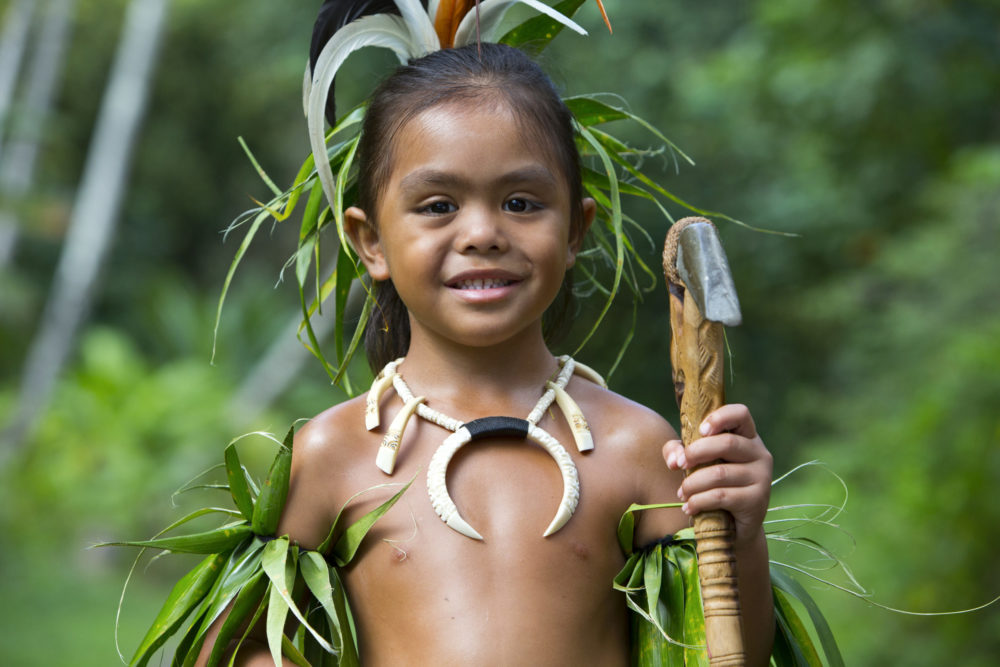
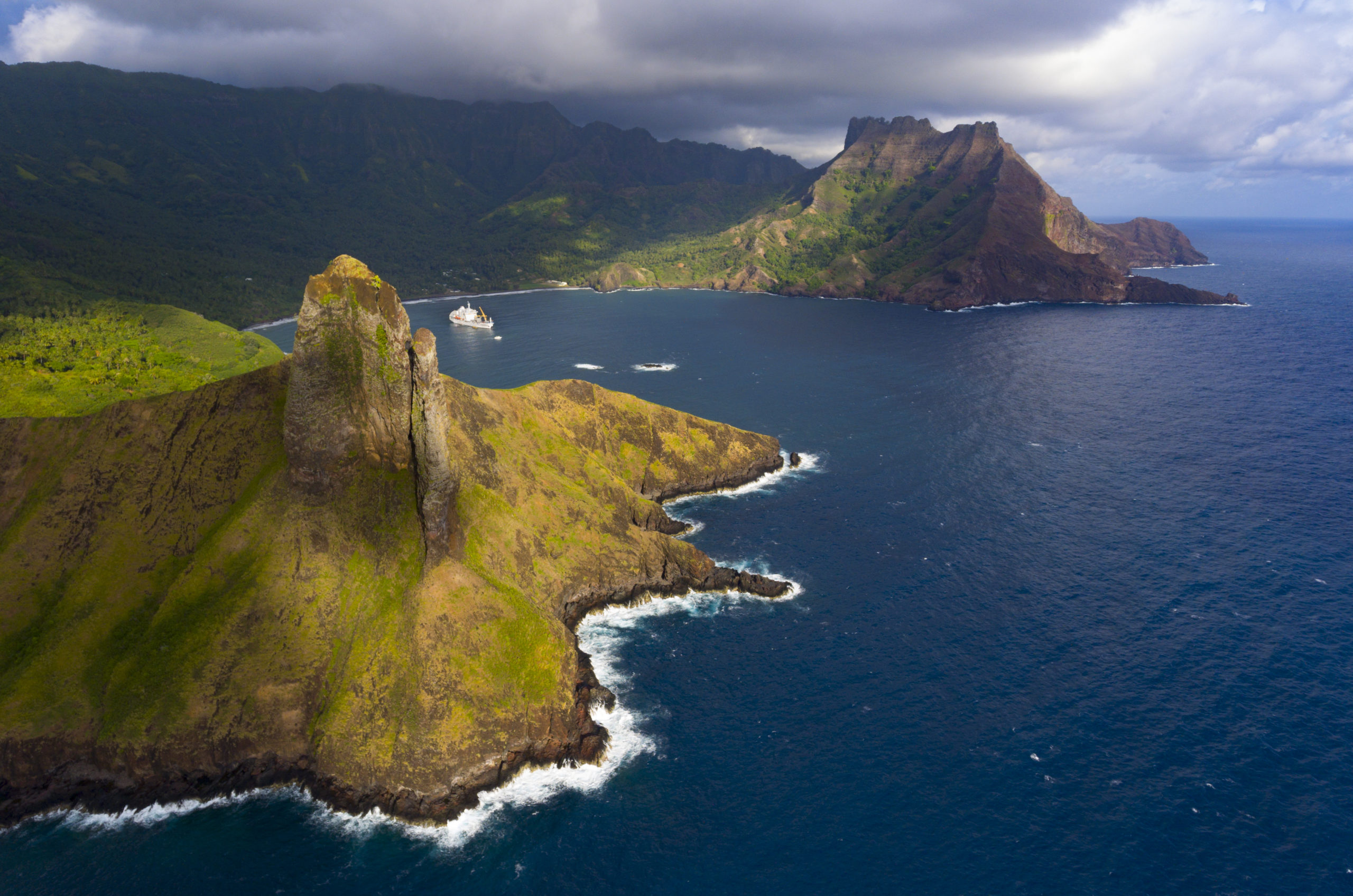
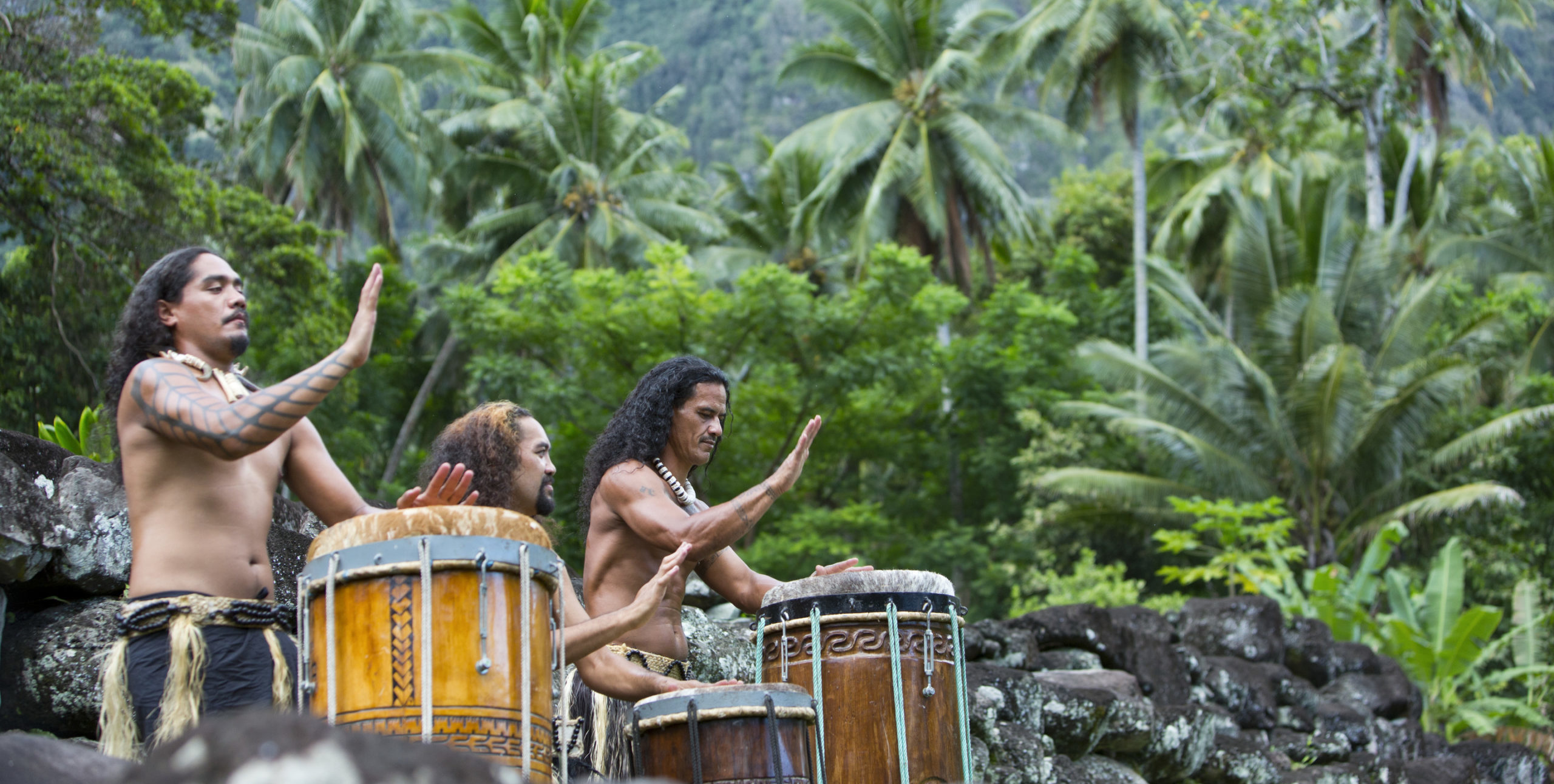
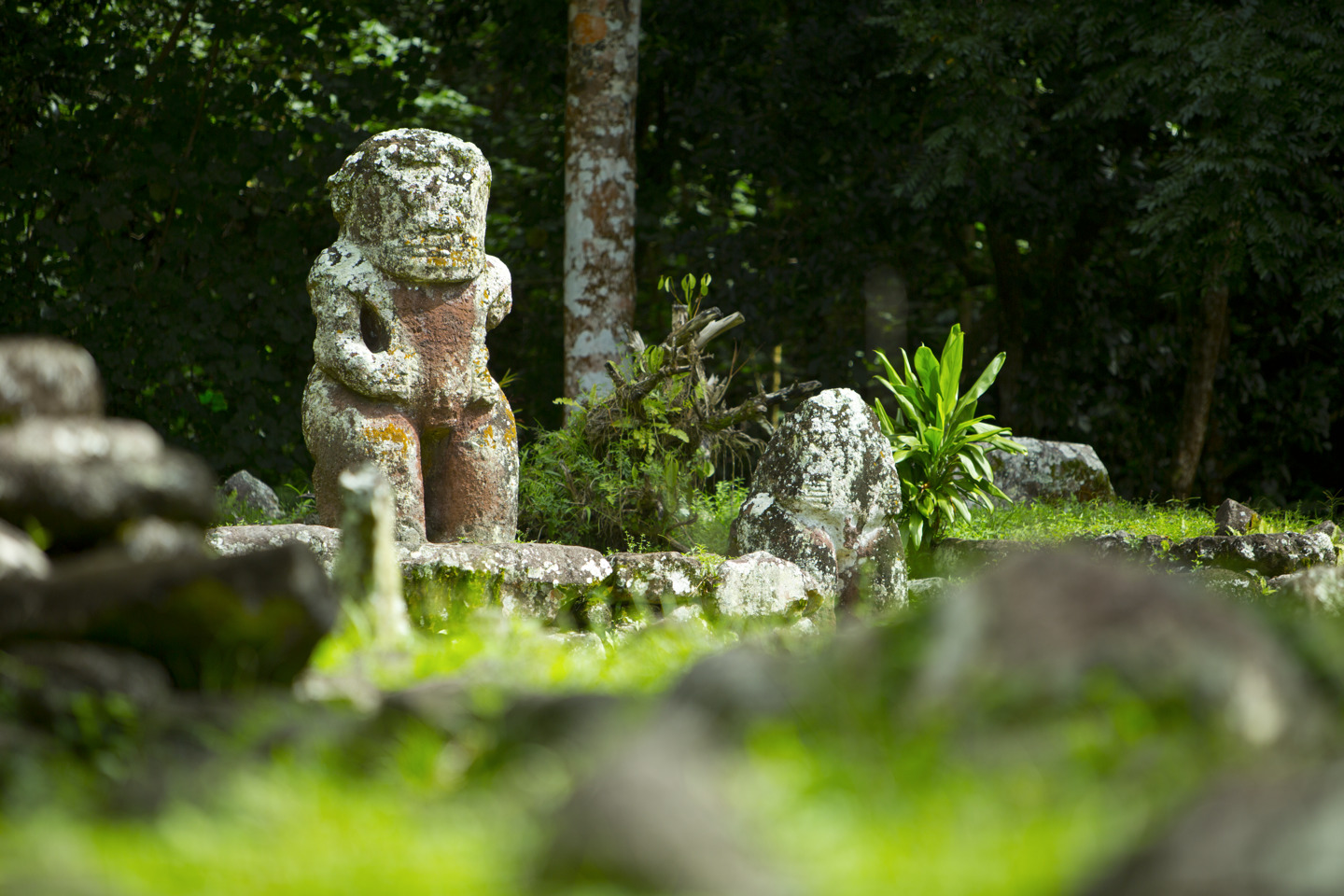
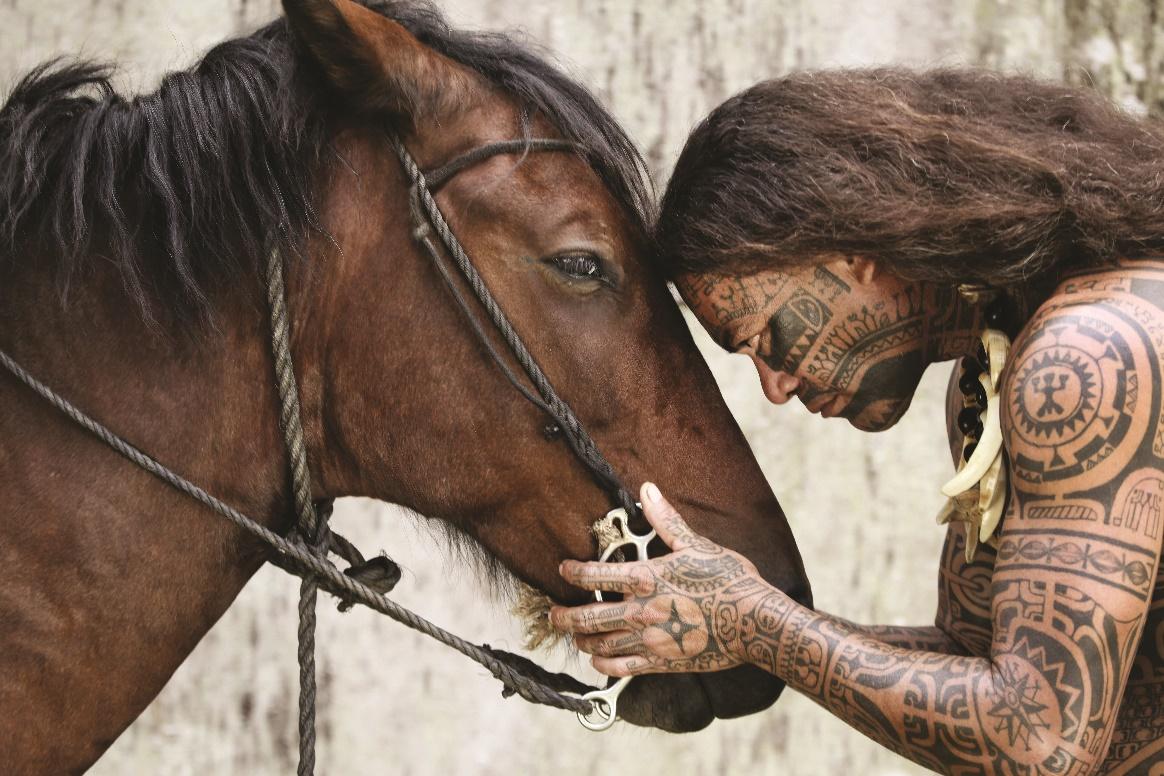
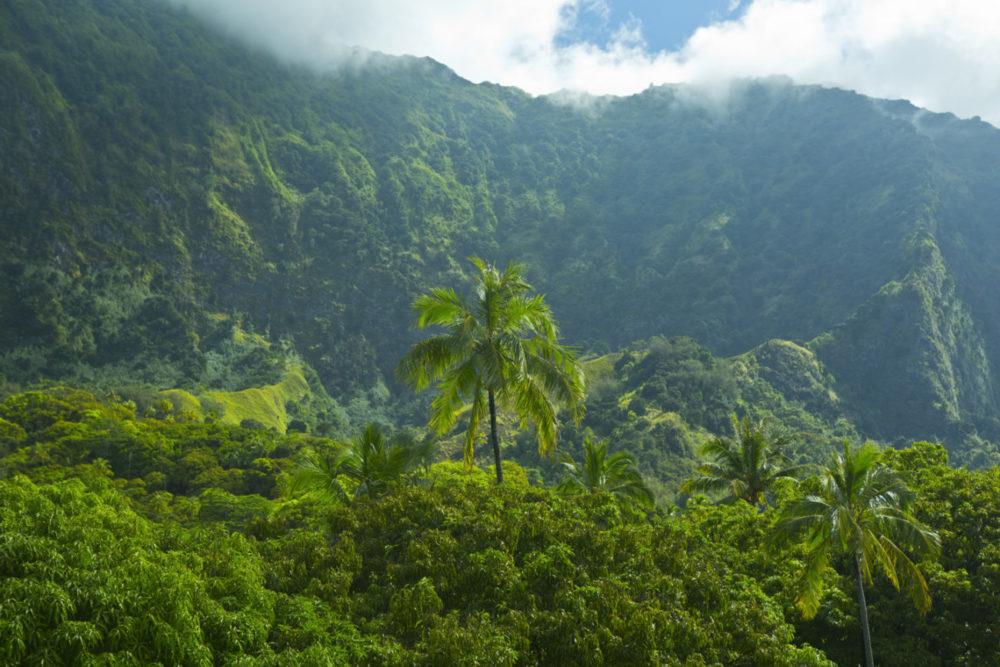
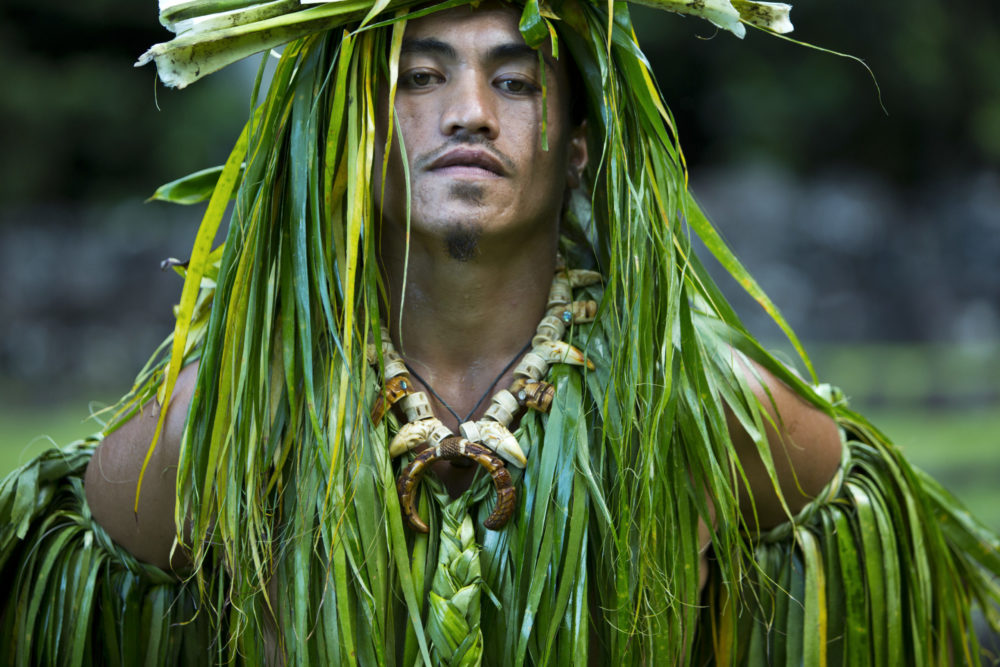
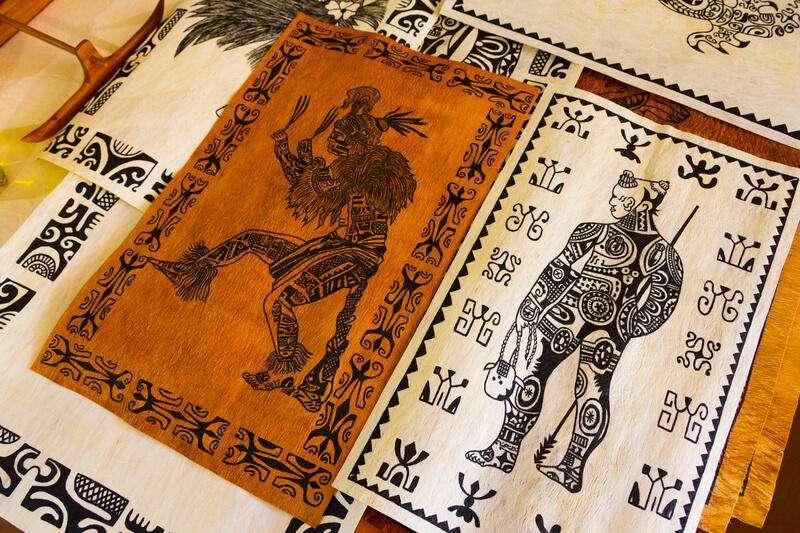
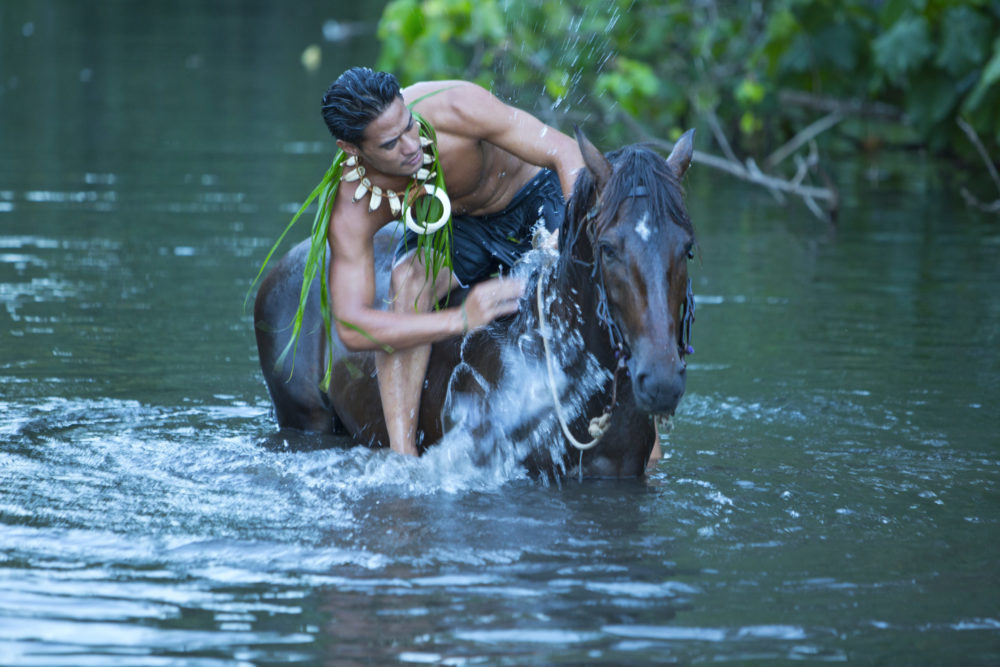
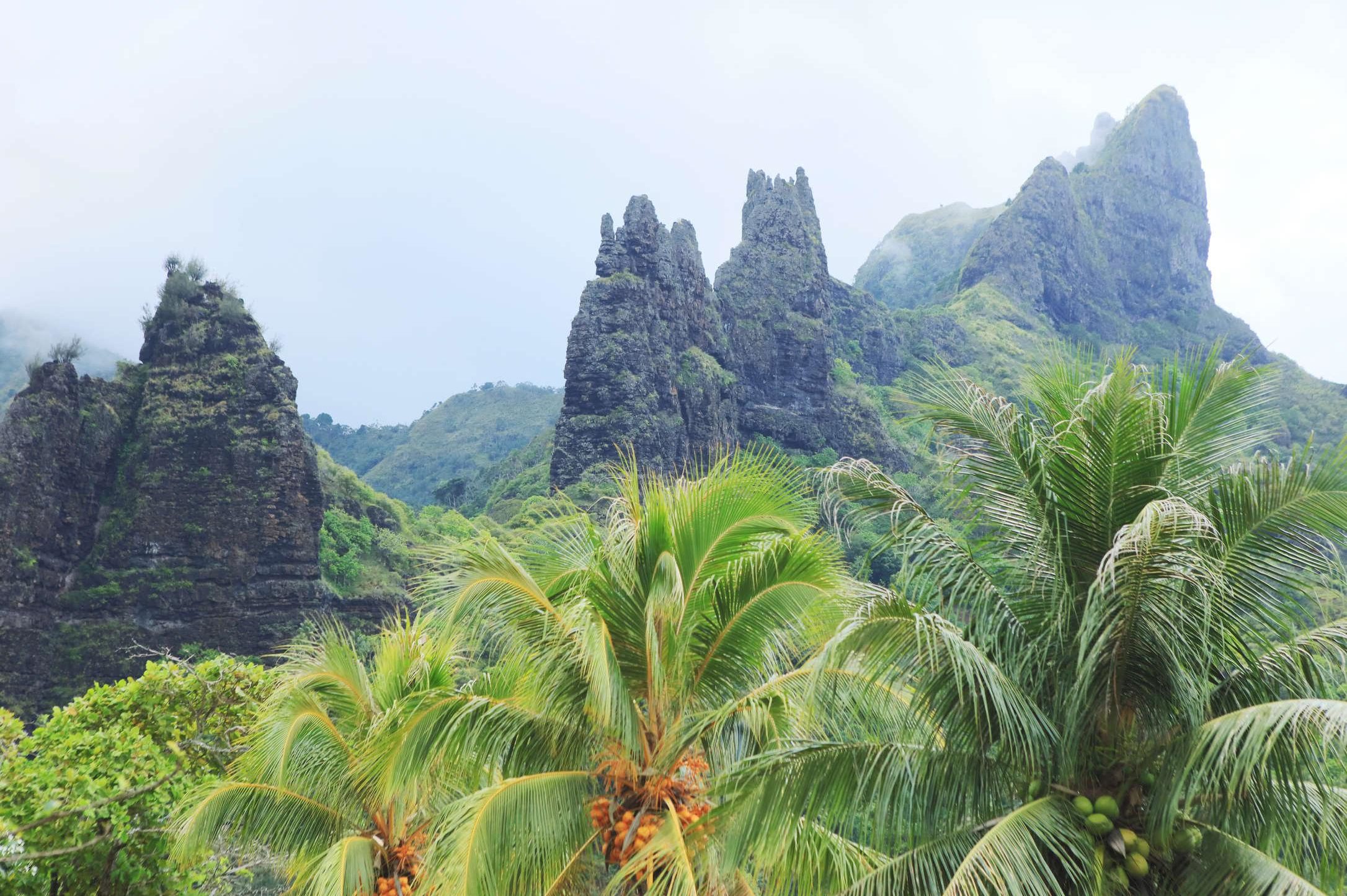
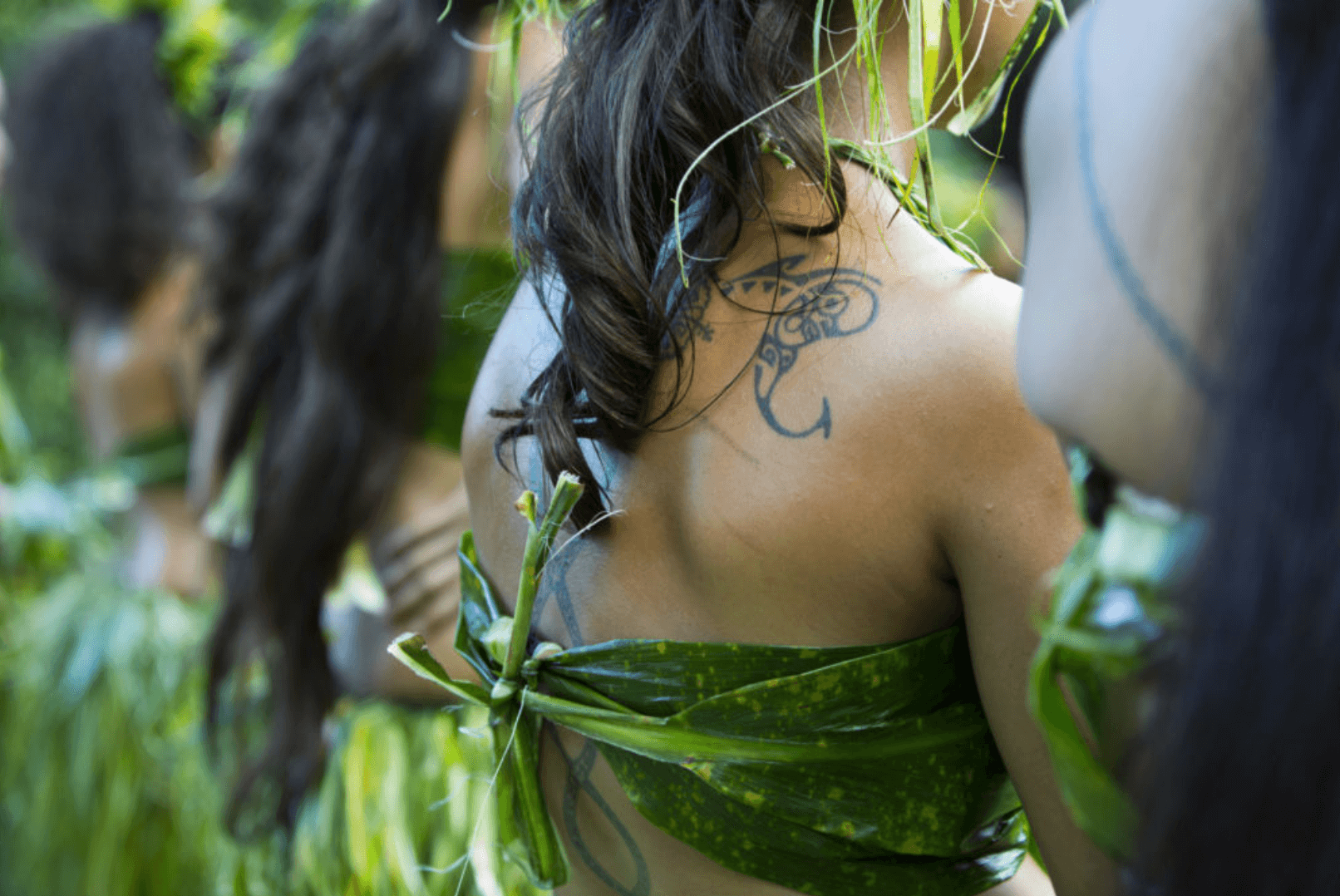
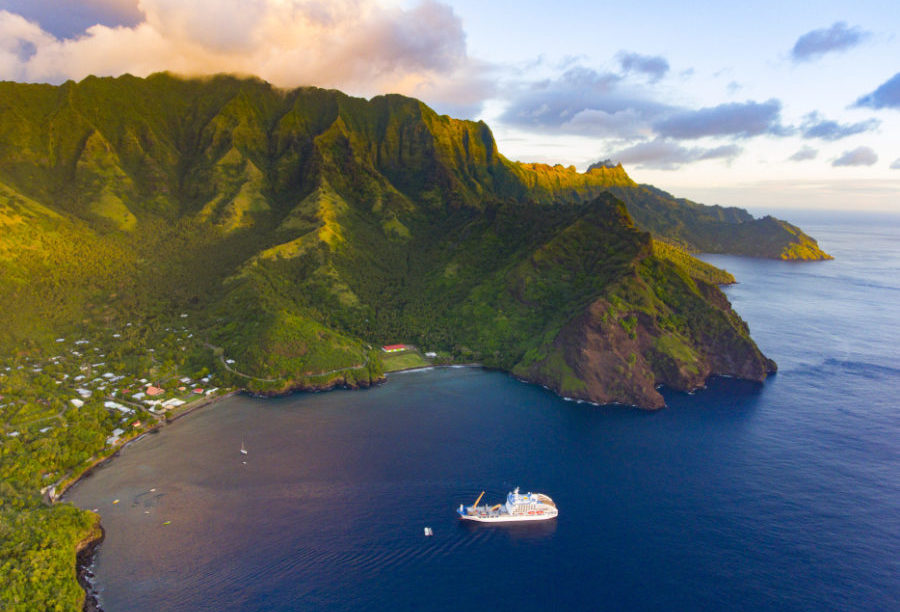


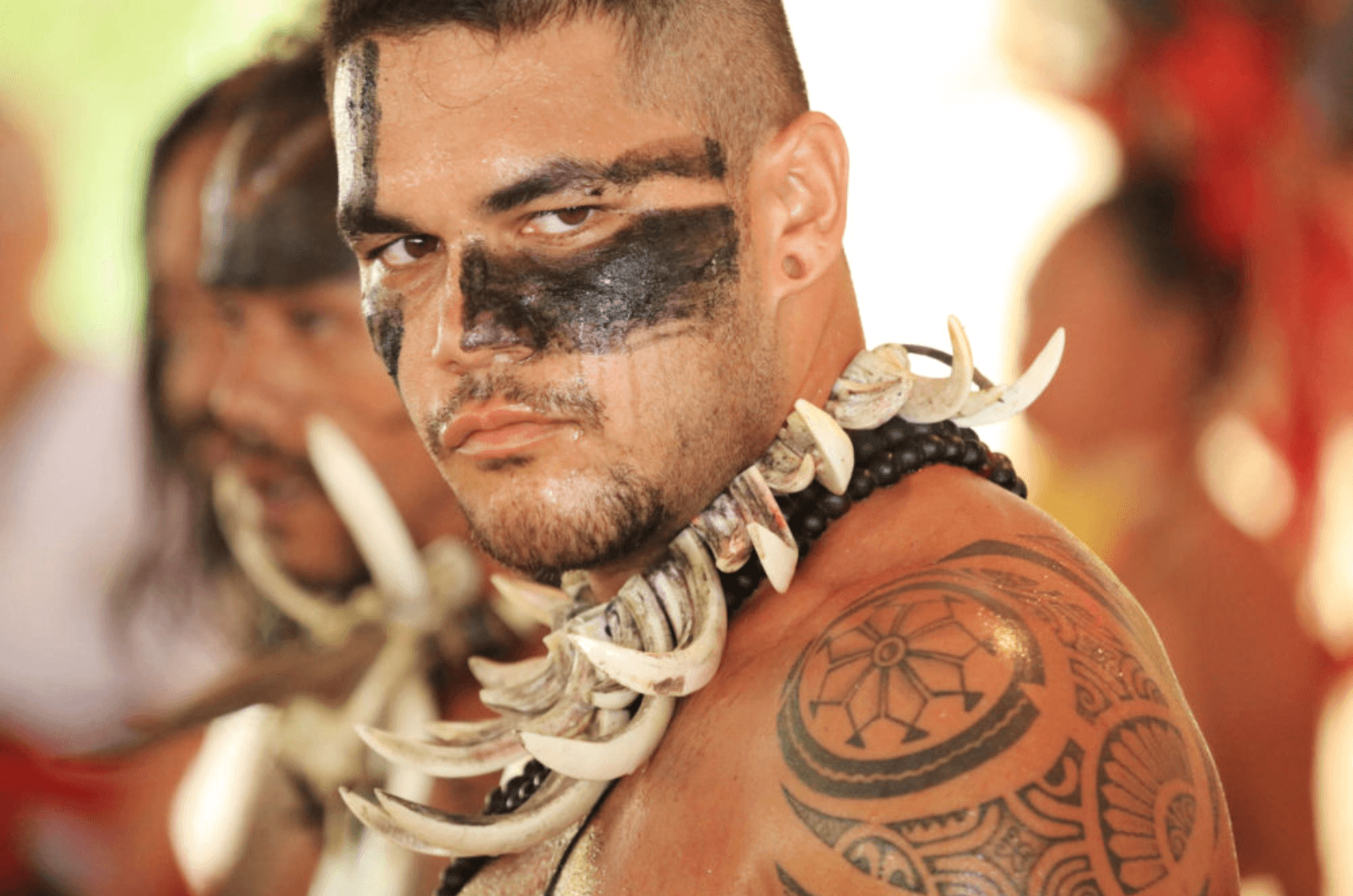

THE STOPOVERS OF OUR CRUISES INE THE MARQUESAS ISLANDS
During the cruise to the Marquesas Islands, Aranui 5 will call at each of the six inhabited islands of this mythical archipelago, where it will deliver the freight. While the crew unloads the goods needed by the islanders the passengers visit the islands with the ship’s English-speaking guides. While Aranui 5 offers several cruises in French Polynesia, this cruise to the Marquesas Islands remains it’s main and historic itinerary. As the main cargo carrier to the Marquesas, Aranui 5 has a vital link with this archipelago.
Hiva Oa, the island of artists
According to legend, Hiva Oa is the main beam of God’s “big house.” Today, it is commonly named the “Garden of the Marquesas” thanks to its fertile and lush land. The island features endless untouched nature: green, invading, and bright. Roads and houses are rarely seen. The island’s rugged landscapes blend sharp ridges, peaks and valleys scattered with archaeological sites and ruins, and is home to the largest tiki statues of French Polynesia. Hiva Oa is lined with black sand beaches and sharp cliffs diving in to the Pacific Ocean. The island’s main village, Atuona, is nestled at the end of Taaao Bay and overlooked by the highest mountains (Mount Temetiu – 4,186 ft. and Mount fe’ani – 3,366 ft.). This is also the place where two famous artists chose to live their lives: the French painter Paul Gauguin and the French poet, singer and actor Jacques Brel.
Fatu Hiva, the remote island
of the Marquesas
Fatu Hiva symbolizes the roof of Gods’ house: a small but stunning island. Arriving by sea, passengers are greeted by sheer landscapes and pristine vegetation. Fatu Hiva will mesmerize visitors. In 1937, Thor Heyerdahl and his wife, in their search for a genuine return to nature, set foot on the island to live as if at the dawn of the new world. Not much has changed. Today, most local people live around the village of Omoa where they make traditional and renowned tapa out of tree bark. The village of Hanavave is sheltered within an amazing bay: the Bay of the Virgins, probably one of the most beautiful bays on Earth, especially at dusk when the light illuminates the volcanic peaks turning the landscape into an unreal and unforgettable scene.
Ua Pou, mainstay of the Marquesas
Ua Pou symbolizes the entrance pillars to God’s house. Huge basaltic columns reach the sky and hold the names of legendary warriors: Poutetaunui and Poumaka. In 1888, they inspired poet Robert Louis Stevenson, who mentioned them as “volcanic arrows looking like a church bell tower.” They proudly overlook the bay of Hakahau village, the main village on the island.
Ua Huka, the horse island
Ua Huka symbolizes the “food basket” at God’s house and features more untouched beauty and is renowned for its dry soil and landscapes. Wild horses gallop as far as the eye can see around this desert-coloured land. Goats climb up on the island’s high plains. Peaceful and mystical, Ua Huka invites the traveller to discover a secluded universe, where the island’s ancestors are not just a part of the past but still very much part of the islander’s everyday life.
Nuku Hiva, the largest island
in the archipelago
If God had a “big house” symbolizing the Marquesas Islands, the largest of them – Nuku Hiva – would represent the top of the framework. The vertiginous volcanic peaks and amazing slopes blend with the blue of the Pacific Ocean. A special universe opens its doors. The starting point of your adventure is Taioha’e, the archipelago’s regional capital, opening at the end of a large bay holding the same name. Outstanding landscapes, an incredible archaeological history, great stories and a rich culture are all to be discovered alongside a friendly population.
Tahuata, the authentic Marquesas
Island
Tahuata symbolizes “sunrise” or “the enlightening home” at God’s house: a poetic image expressing reality so well. Small, Tahuata is only accessed by sea from Hiva Oa. The island offers charming discoveries to the privileged traveller. From its fertile valleys to its crystal-clear bays, Tahuata is an exquisite haven of peace, a place of history and creativity. Most inhabitants make a living out of their remarkable fine artwork, such as bone and rosewood – or miro (Thespesia populnea) carving. Mono’i is made following the scents of traditions and secrets, like an invitation to a mesmerizing perfume beautifully named “love potion” by the islanders.

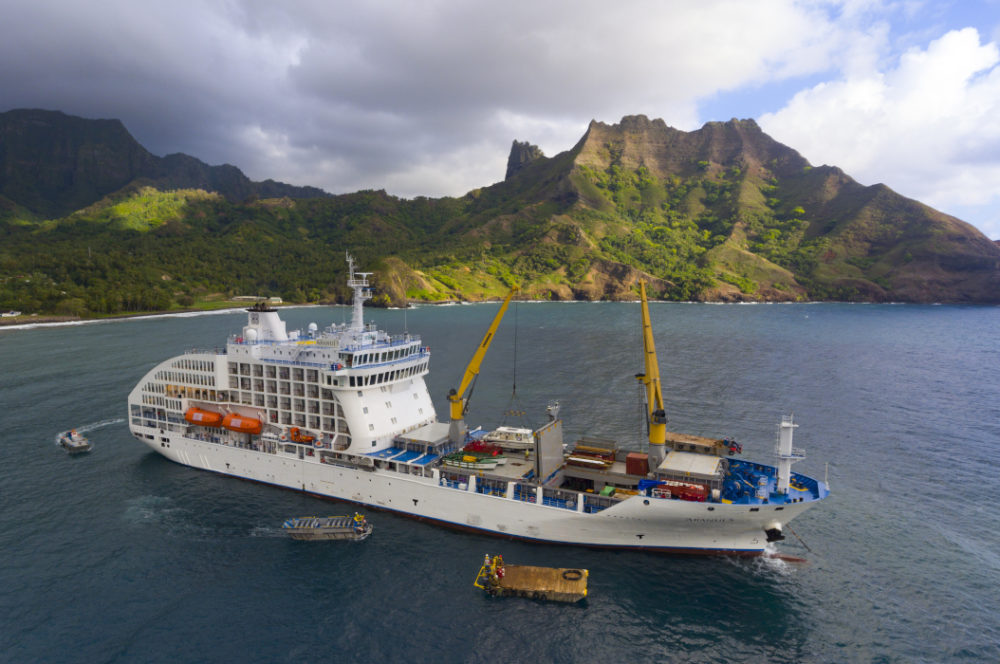
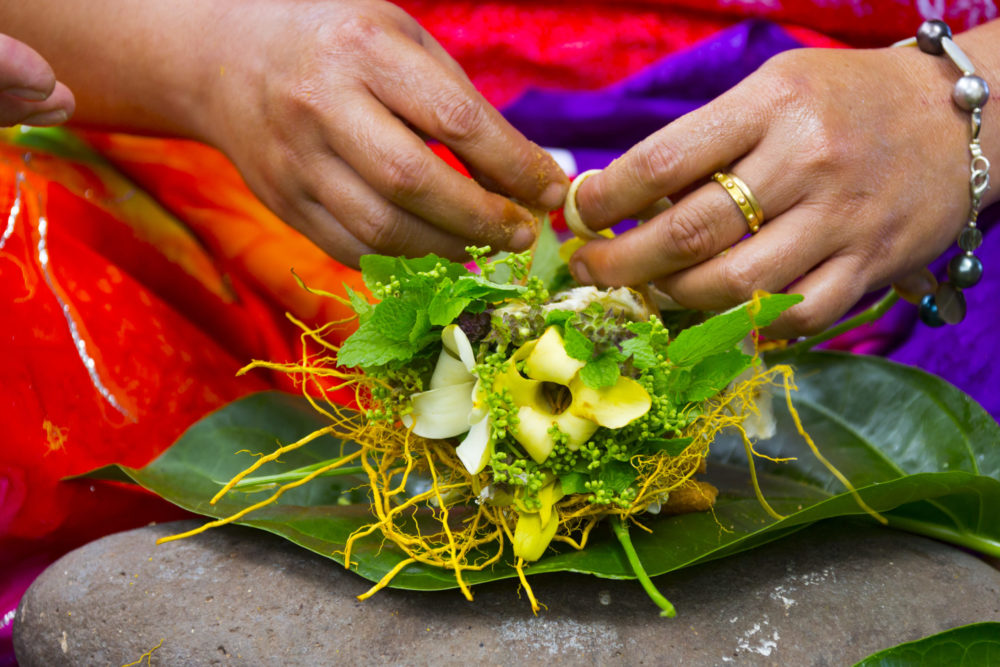
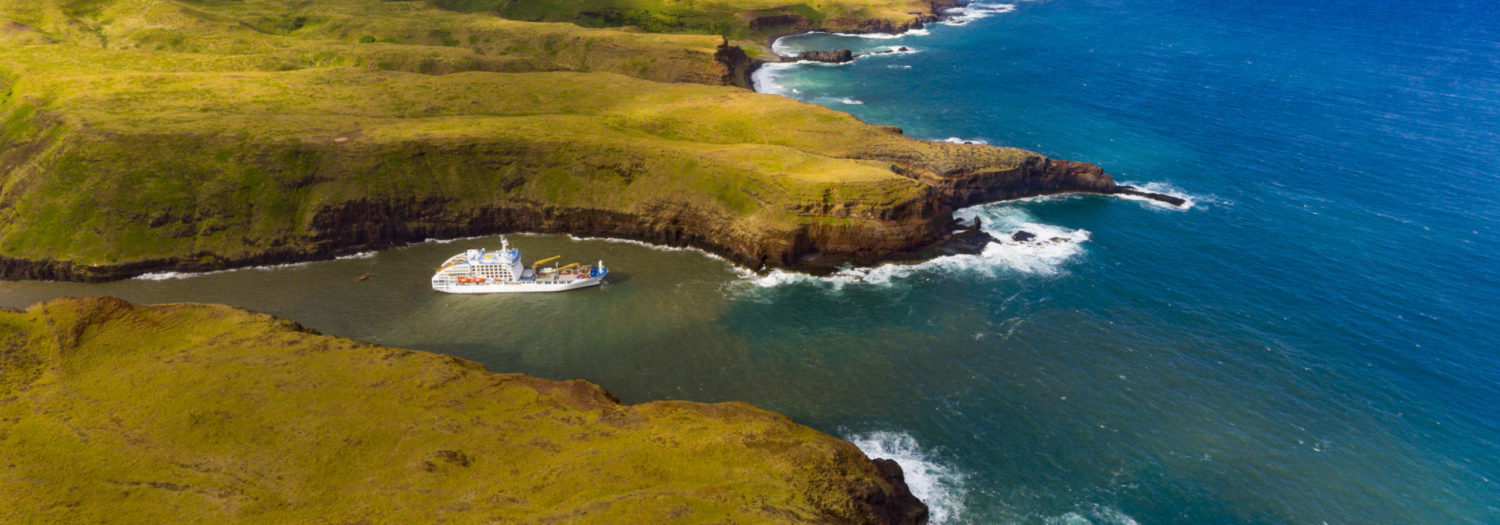
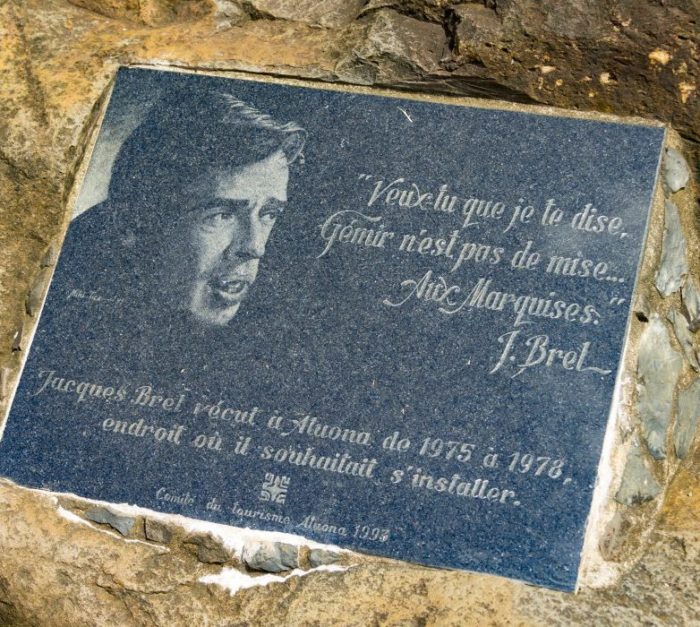
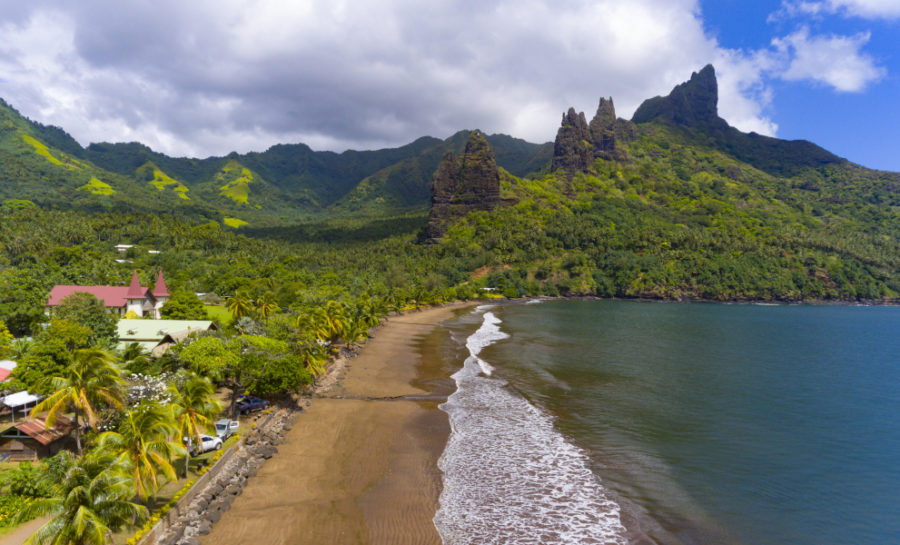
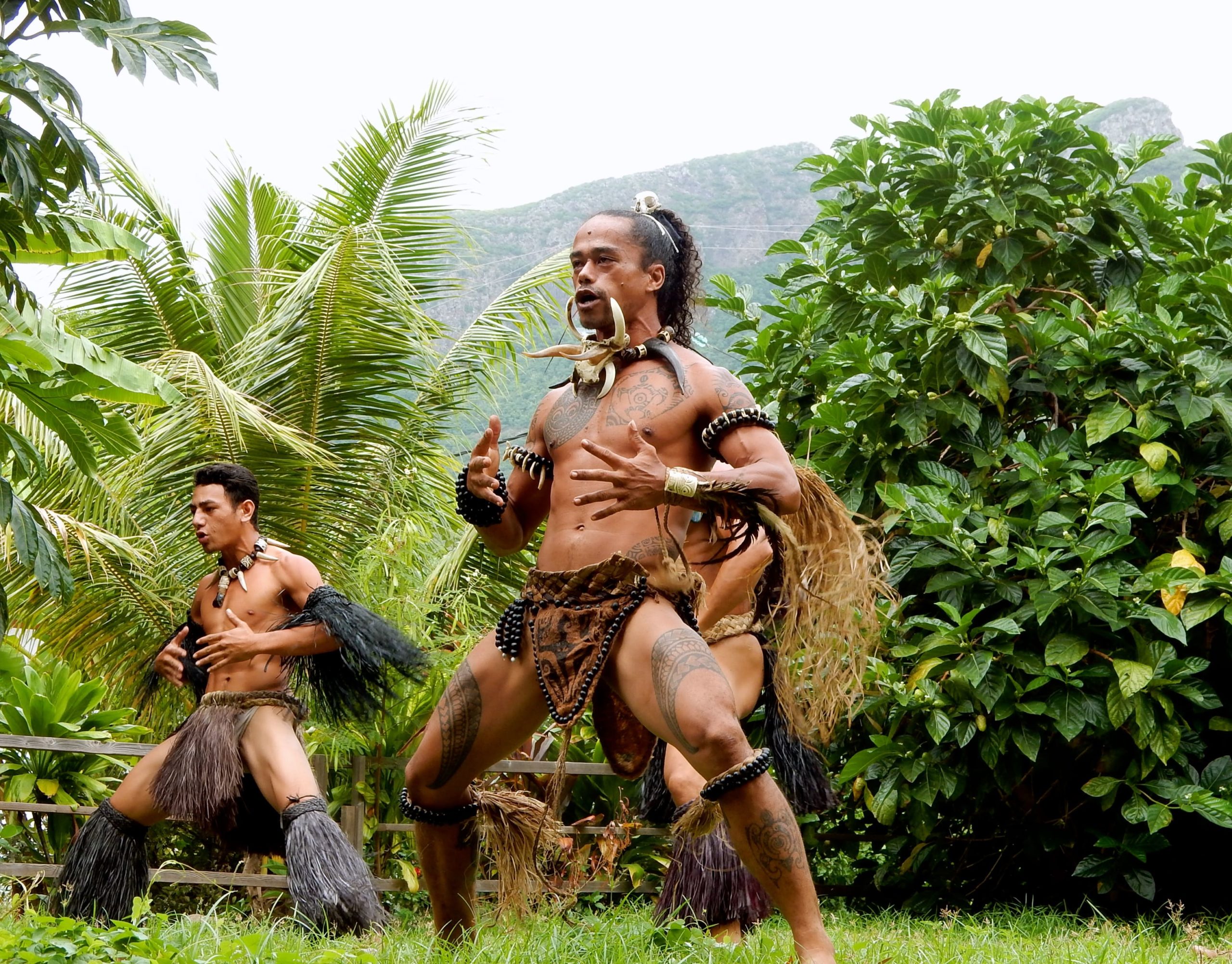
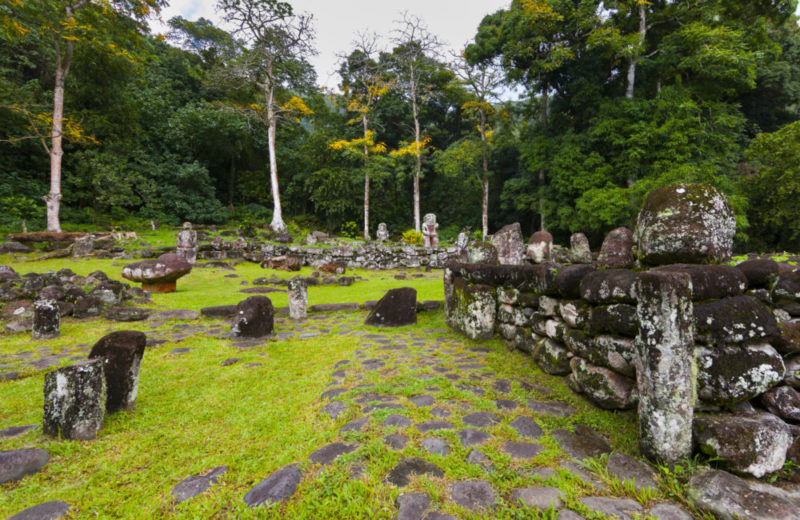
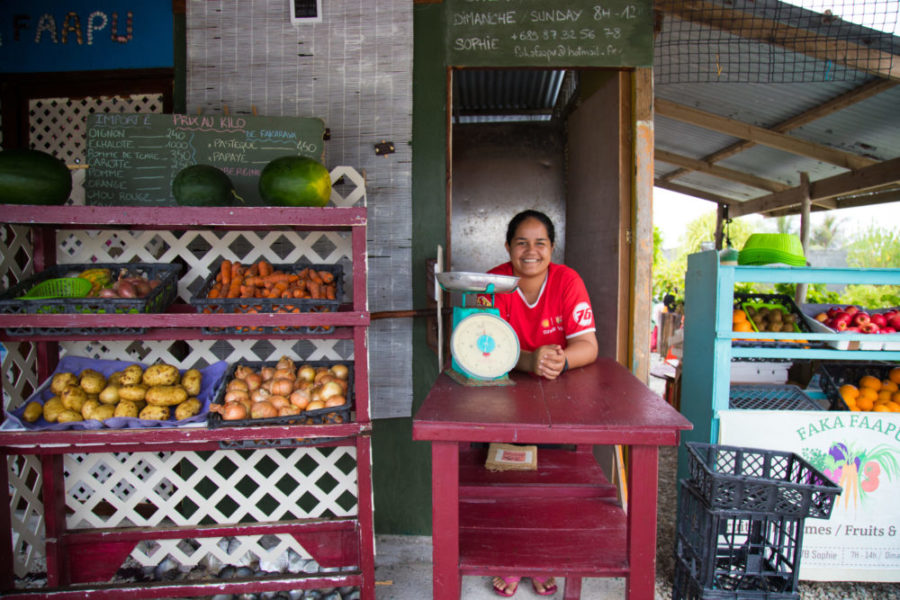
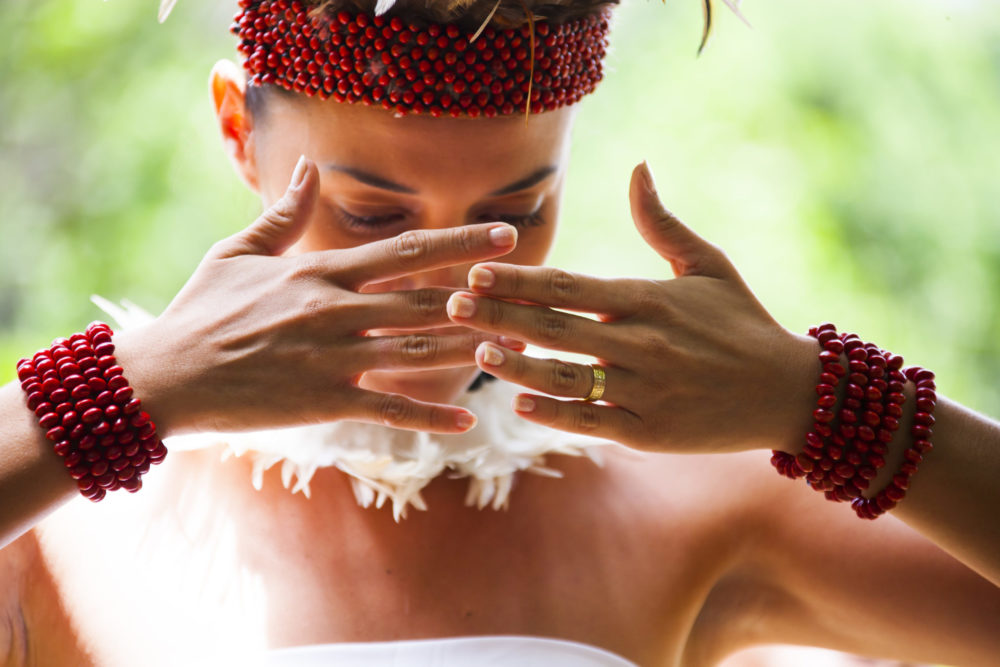
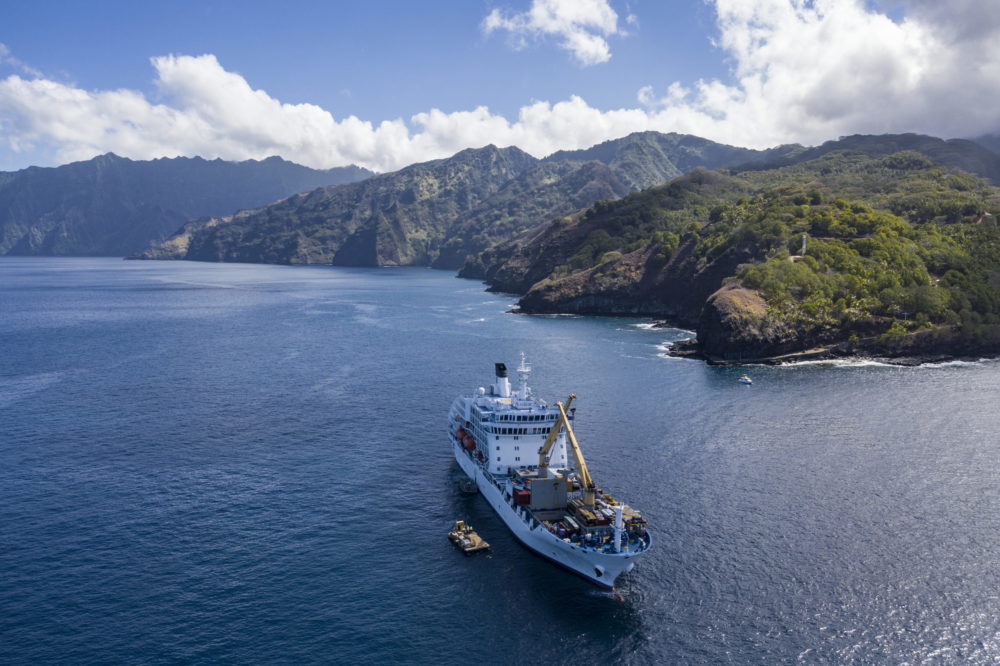
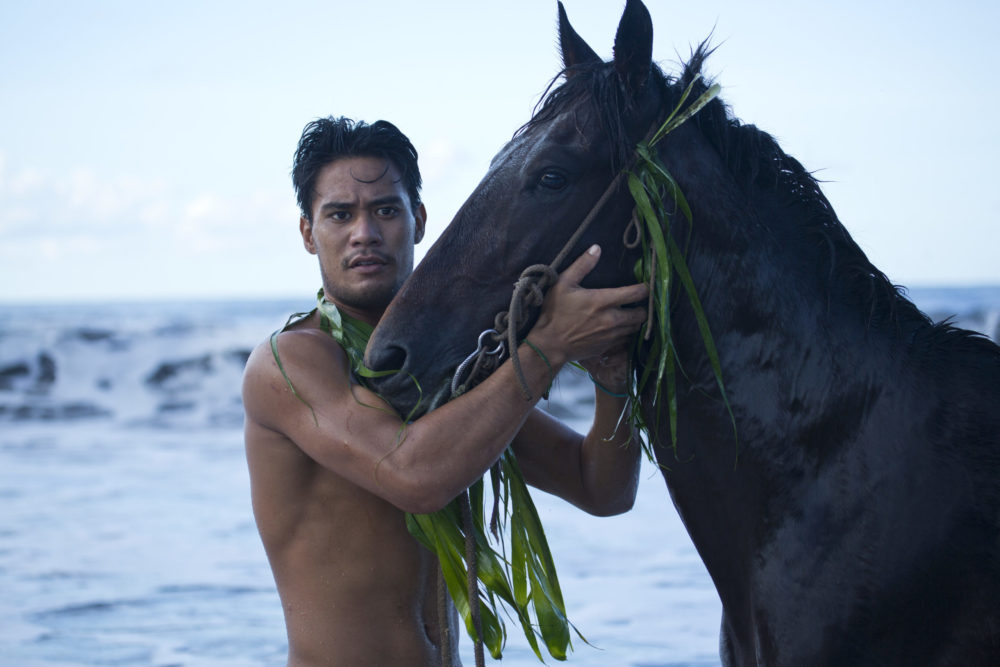
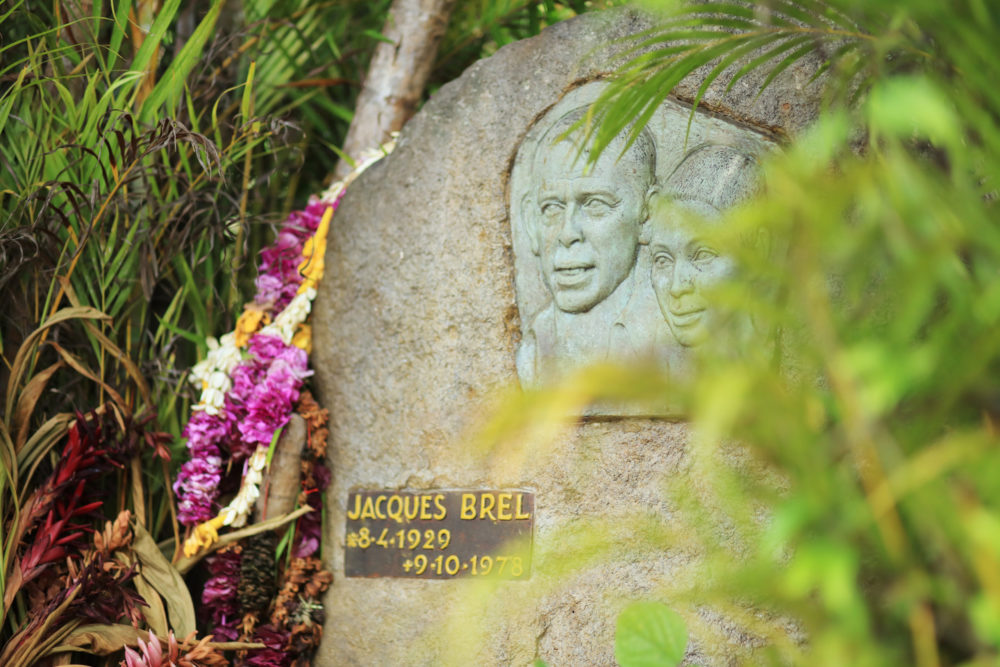

POURQUOI VISITER LES ÎLES MARQUISES AVEC L'ARANUI
Les Marquises font partie de ces lieux mystérieux, perdus au beau milieu d’un océan et encore peu connues du grand public… Des paysages accidentés et époustouflants de montagnes, de vallées, de plateaux et de falaises. Une nation d’anciens guerriers fiers et redoutables, distincts des Tahitiens, avec leur propre langue et leur propre culture. Un peuple qu’un simple sourire conquiert. Les îles Marquises sont un monde à part entière.
Les îles Marquises sont saisissantes de beauté et abondent en vestiges archéologiques. Nature sauvage, territoire des chevaux et chèvres sauvages, culture forte et fascinante, les Marquises ont également été la terre d’accueil d’immenses artistes comme Gauguin et Brel, trouvant là les émotions brutes nécessaires à leur art. Le groupe nord regroupe la grande Nuku Hiva, ’Ua Pou et ses montagnes en pain de sucre, ’Ua Huka l’île aux chevaux ; le groupe sud compte Hiva ’Oa, l’île aux tiki monumentaux, Tahuata et Fatfu Hiva, les plus isolées.
Chacune des six îles habitées des Marquises est fière de ses particularités et s’épanouit dans un artisanat d’art traditionnel et créatif de grande qualité. Partout, le tatouage est pratiqué et revêt un sens profond, héritage d’une culture millénaire. Il a atteint aux Marquises un degré d’esthétisme sans précédent. Enfin, l’hospitalité du peuple marquisien est particulièrement marquante.
C’est donc une destination idéale pour les voyageurs qui cherchent à découvrir une nouvelle culture et à profiter d’une expérience inédite sur un bateau qui ne ressemble à aucun autre au monde. Si vous êtes à la recherche d’une destination exotique et mythique, les îles Marquises sont faites pour vous !
Faire une croisière aux îles Marquises à bord de l’Aranui, est le meilleur moyen pour découvrir les 6 îles habitées de l’archipel dans toute leur splendeur. L’Aranui 5 est un navire mixte de ravitaillement et de transport de passagers. Ainsi peut-il accueillir, à chaque voyage, jusqu’à 230 passagers dans ses 103 cabines, mais aussi pas moins de 2500 tonnes de fret. Sa route le mène, à travers les Tuamotu, jusqu’aux Marquises, avant un retour à Tahiti. Dans ces îles éloignées, il n’est pas seulement un bateau de croisière, mais un lien essentiel avec le reste de la Polynésie. Quand vous pénètrerez dans les baies cachées des Marquises, alors vous le ressentirez, l’Aranui vous propose bien plus qu’une croisière : un voyage d’aventurier. L’Aranui aux Marquises est une expérience absolument marquante, dépaysante, parfaite pour qui recherche une vraie immersion culturelle. Îles mystérieuses et encore peu connues du grand public, l’Aranui est le moyen le plus original et authentique de découvrir les îles Marquises avant que tout le monde décide de s’y rendre !
La réponse est oui ! Une croisière aux îles Marquises est une destination de vacances parfaite pour les familles qui recherchent un voyage authentique et hors des sentiers battus mais dans le plus grand confort. Les excursions proposées lors de la croisière avec l’Aranui, vous feront découvrir la culture marquisienne à travers les villages, les sites archéologiques et historiques, les artisans. De nombreuses activités sont prévues dont des balades à pied dans des sites naturels grandioses, des démonstrations de chants et danses, de l’artisanat, du 4×4 mais aussi du snorkeling ou, en extra, de la plongée. L’expérience Aranui conviendra donc très bien à des familles avec enfants, notamment si les enfants sont suffisamment grands pour apprécier la découverte d’une autre culture.
Le coût d’une croisière aux îles Marquises à bord de l’Aranui est estimé à environ 5000 à 7400 euros par personne, selon le type de cabine choisie, mais peut descendre à moins de 3200 euros en dortoir. Ce budget comprend l’hébergement et la pension complète à bord du navire (avec le vin de table, l’eau, thé et café), toutes les excursions prévues au programme et les taxes. Il faut rajouter entre 1500 et 2000 euros pour les vols internationaux aller-retour. À ce budget, il faut ajouter le coût des assurances et des dépenses annexes (massages, achats à la boutique du navire, excursions ou plongées en extra etc). Le prix indiqué est un prix moyen, Celui-ci peut varier en fonction de paramètres tels que la période de réservation, le niveau des services choisis, etc.

 Discover our cruises in the Marquesas
Discover our cruises in the Marquesas